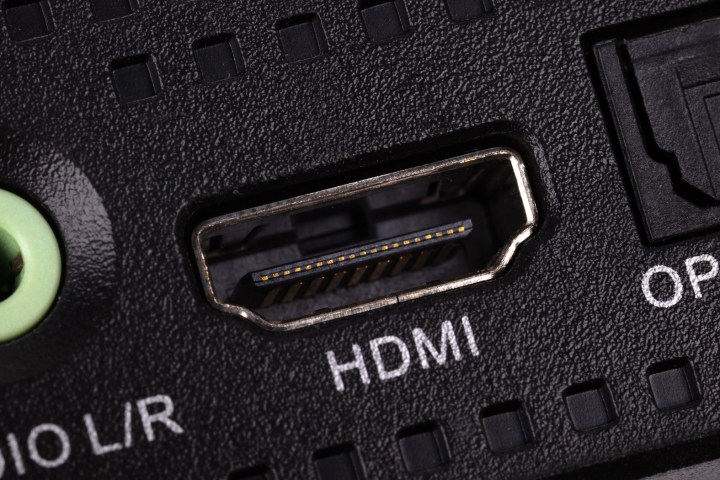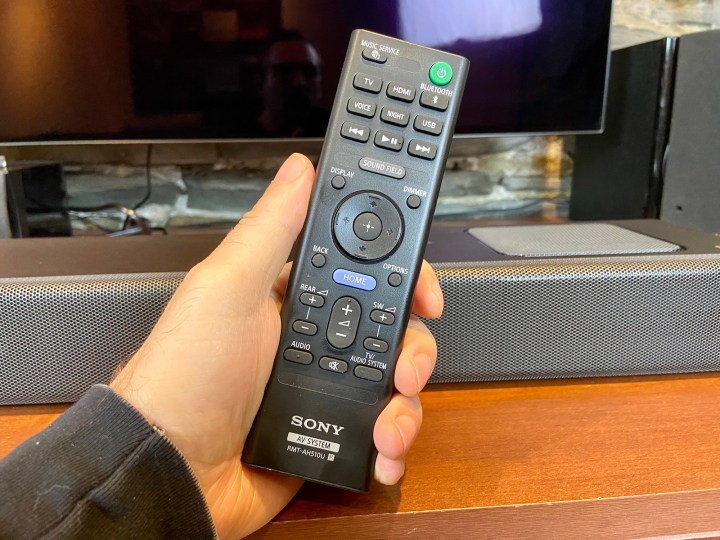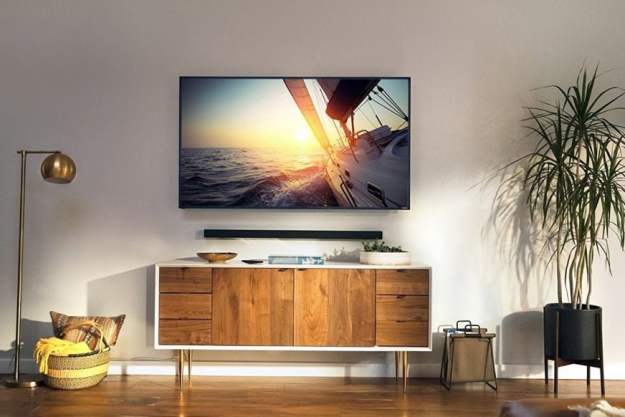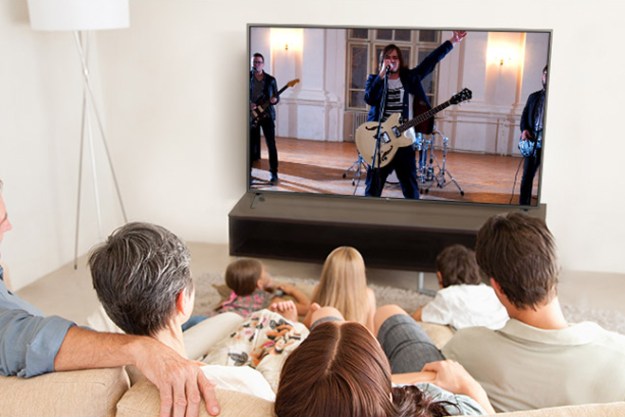Wiring up your TV is a fairly cut and dry process, and thanks to advancements in A/V technology, there’s pretty much only one cable you’ll need for any new home theater component, and that’s HDMI.
The all-in-one digital connection has created a cornucopia of ways to make hardware ready for the expanding A/V world around us, allowing for innovations like 4K Ultra HD and 8K resolution.
But as we move through generations of new HD standards, the type of HDMI cables we need are continuously changing — HDMI 2.0 begot 2.0a, then 2.0b, and now 2.1. One of the most common HDMI standards that still remains is HDMI 2.0b. HDMI 2.0b was built on HDMI 2.0a, which tacked a few features onto the previous HDMI 2.0, including HDR. Designed to vastly improve the contrast between light and dark images for a more realistic picture, HDR is now pretty standard in most new TVs.
In this article, we’ll explain all the wonderful things you can do with your home theater thanks to HDMI 2.0, while also touching on the benefits of HDMI 2.0b — which is extremely similar to HDMI 2.0a. In fact, the two are essentially the same, except that HDMI 2.0b adds support for Hybrid Log-Gamma (HLG), a newer HDR technology intended for broadcast applications.
And guess what? HDMI 2.0b does not require different cables than what you’re already using, unlike HDMI 2.1.
The basics

As we’ve written about previously, the primary reason for the switch to HDMI 2.0 is that 4K Ultra HD televisions require much more bandwidth to realize their full potential. Since 4K Ultra HD is four times the resolution of 1080p, the former HD standard, it requires more throughput to handle extra data going back and forth. Lots more.
HDMI 1.4 supported 4K resolutions, yes, but only at 24 or 30 frames per second (fps). That works fine for movies but isn’t useful for gaming and many TV broadcasts, which require 50 or 60 fps. Also, HDMI 1.4 limited 4K Ultra HD content to 8-bit color, though it is capable of 10- or 12-bit color. HDMI 2.0 fixed all of that because it could handle up to 18 gigabits per second — plenty enough to allow for 12-bit color and video up to 60 frames per second.
Ultra HD was one thing, but current TVs aim to blow our minds with even higher image realism, by creating more intense whites and blacker blacks — it’s like Tide for your TV, making everything more vivid, which is what HDR is all about. TVs from Sony, Panasonic, LG, Samsung, and Vizio all tout one version or another of HDR technology. HDMI 2.0b adds yet another flavor to the HDR menu, with support for HLG, the version of HDR that is favored for live TV broadcasts.
Don’t throw away your HDMI cables
As mentioned above, HDMI 2.0b changes nothing about the size, shape, or wiring of HDMI cables. Should you wind up getting devices that are HDMI 2.0a compliant, your existing cables will work just fine. And since HDMI 2.0b is backward compatible with older HDMI versions, you’ll be able to connect your old Blu-ray player and/or AV receiver to a brand-new HDMI 2.0b-equipped 4K Ultra HD TV with absolutely no problem.
What’s new with HDMI 2.0b?
Object-based surround sound
The update to HDMI 2.0 in 2013 made possible 32 channels of uncompressed audio. If that sounds like overkill, well … it might be for some. But don’t tell that to the surround sound gurus over at Dolby or DTS. The latest Dolby Atmos surround format is capable of 64 channels of surround in the theaters, which breaks down for your home theater to allow for 11.2-channel audio. It’s called object-based surround sound, and it allows for singular objects to be mixed so that they move throughout a hemisphere of multiple speakers completely autonomously.
Dolby’s version includes configurations that offer two to four speakers that can fire sound down from the ceiling, or bounce sound off the ceiling from the floor for an epic explosion of immersive audio. There are several receivers from the likes of Marantz, Onkyo, and Pioneer that are Atmos compatible, as well as specially designed speakers from Pioneer and others that mount speakers on top of their cabinets to shoot sound off of your ceiling. Wondering if your home theater setup supports Dolby Atmos? Check out our full guide to getting great Dolby Atmos sound.
Not to be outdone, DTS also unveiled its own system for the future of object-based surround sound, called DTS:X. The system is designed to be compatible with many of the same components as Dolby Atmos and, for now, also offers a maximum of 11.2 channels. However, DTS:X allows for even more flexibility than Atmos, including the ability to use up to 32 different available speaker configurations. Is it a coincidence that the available speaker configurations for DTS:X equal the same number of channels that are allowable by HDMI’s current protocol? We think not.
In case you didn’t know, your remote is magical

The switch to HDMI 2.0 brought standards that required the inclusion of certain control features for the standard language that devices speak, called CEC (Consumer Electronics Control). As such, your remote is likely able to control a whole lot of other devices, without requiring you to whip out an encyclopedia of four-digit remote control codes and punch in a bunch of button combinations. With CEC, connected devices can also issue commands to your TV. A connected Chromecast, for example, can tell your TV to turn on and switch to the correct input, simply by casting content from your smartphone to the Chromecast, no need for your remote at all.
Another advance in the protocol, the HDMI-ARC port, vastly simplifies audio connections. In the past, if you wanted to send audio from your TV to your soundbar or A/V receiver, you needed an optical cable (in an ideal world) or at minimum a set of RCA analog cables. Using a TV’s HDMI-ARC port, which virtually all new TVs come with, a single HDMI cable can receive audio and video from an external source, and audio back to that device, which is why ARC stands for Audio Return Channel. It’s a big convenience if you have a streaming device connected to a secondary HDMI port, or if you’re using one of your TV’s built-in apps.
What else can it do?
While it’s been around for a while, it’s important to know that the HDMI 2.0 update made possible simultaneous delivery of dual video streams to multiple users on the same screen — just imagine what that could do for video games! And although HDMI 2.0b is just a minor update, when HLG comes out en masse, the available image advancements could make the update feel a lot bigger.
There you have it. We’re several years in and HDMI is going strong, and the system’s innovative design will continue to allow us to rock out with new technologies and the latest hardware while holding onto the old.
Editors' Recommendations
- Best Samsung TV deals: Save on 4K TVs, QLED TVs, OLED TVs, 8K TVs
- Best Vizio TV deals: Cheap smart TVs starting at $90
- Best OLED TV deals: Save on LG C3, Samsung S90C, and more
- Best 75-inch TV deals: Get a big screen from $500
- Best TCL TV deals: 4K TVs as low as $150





